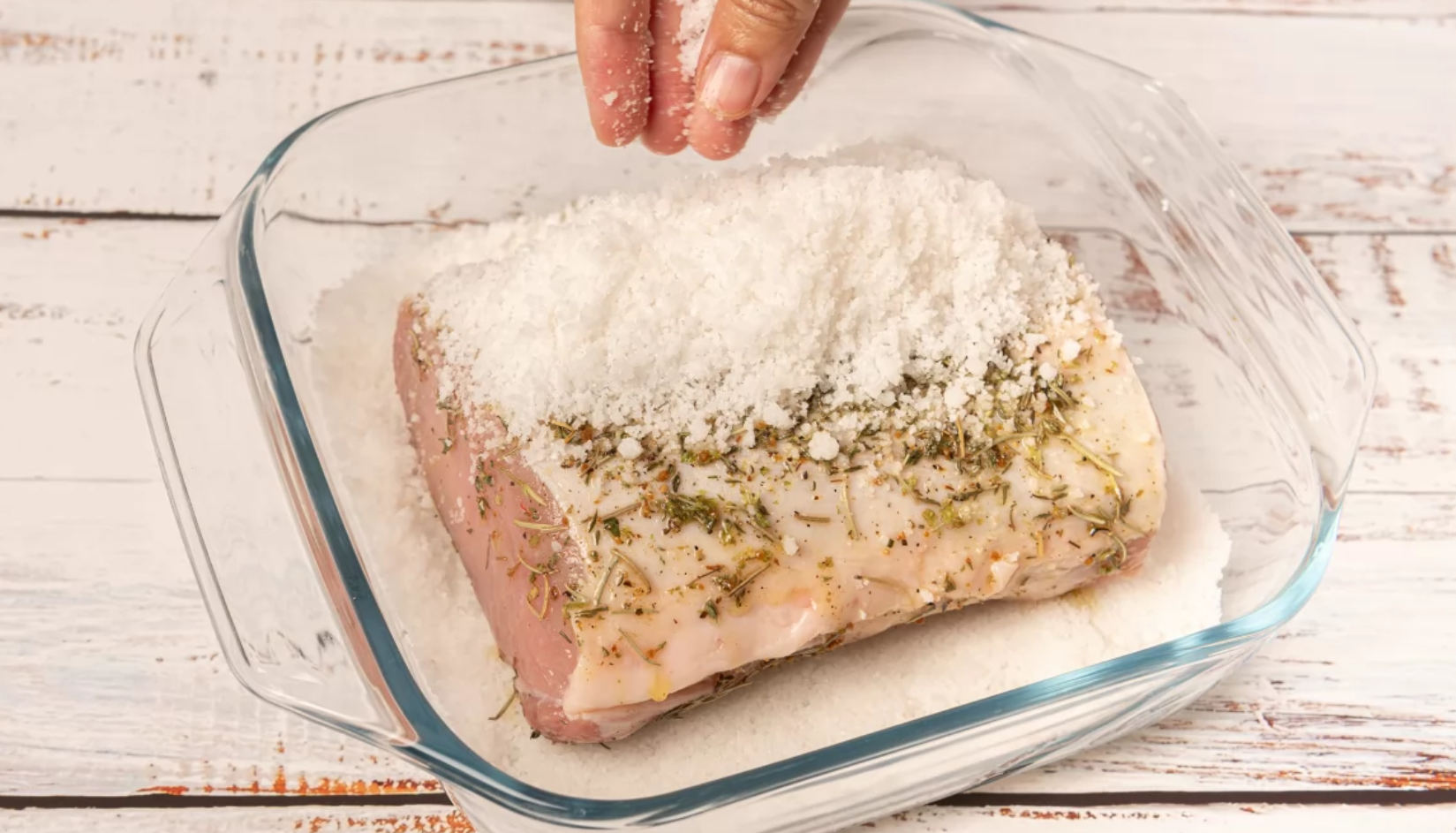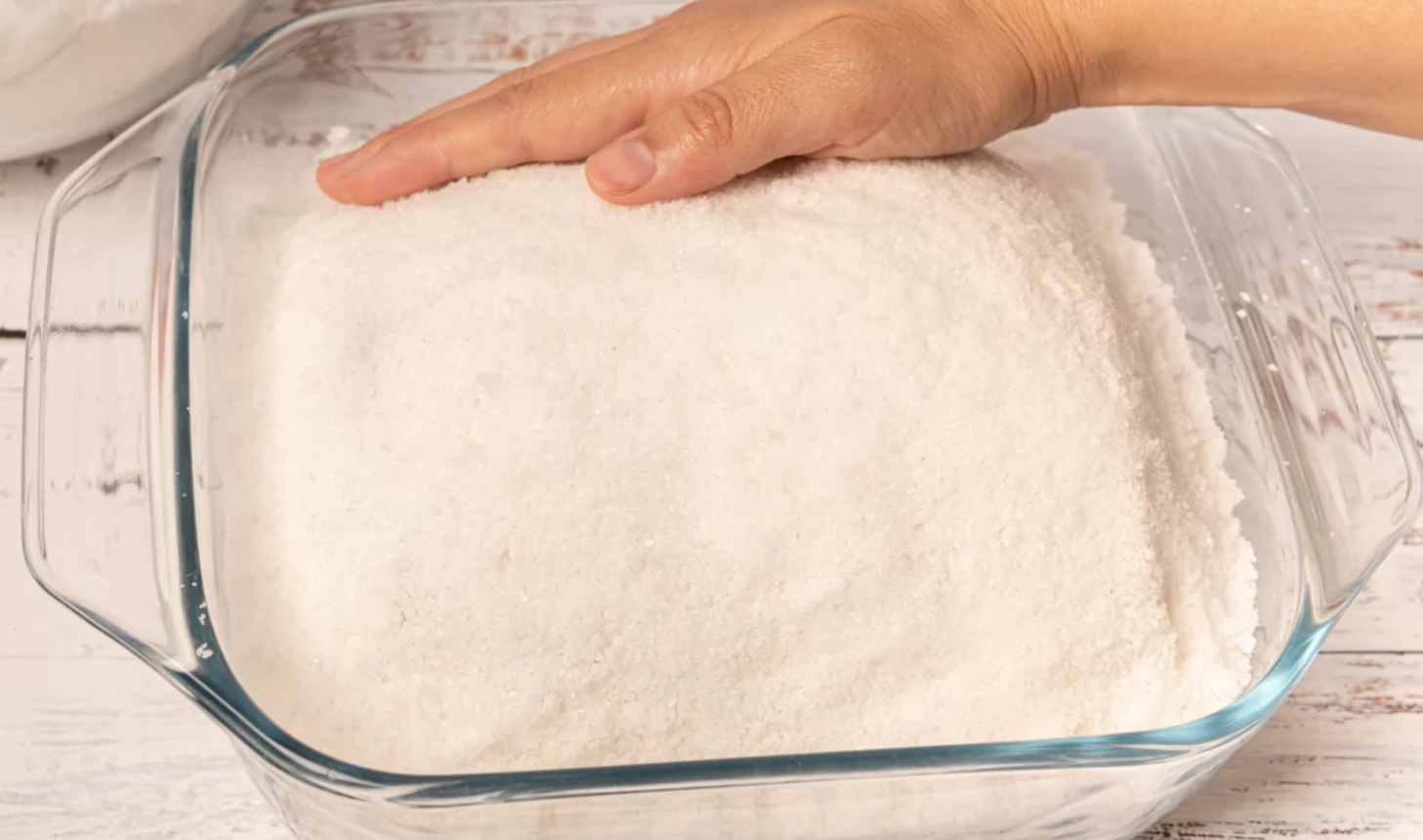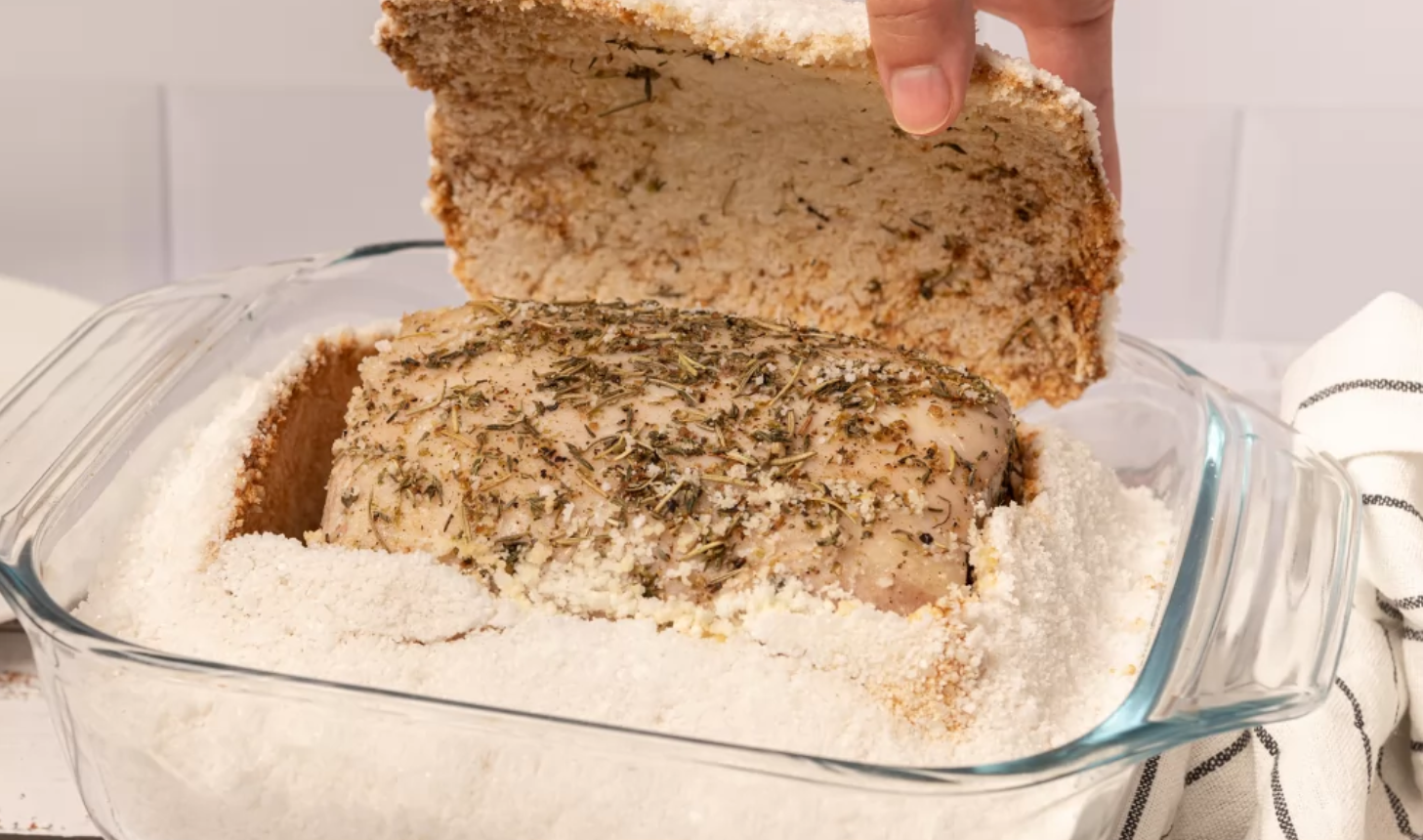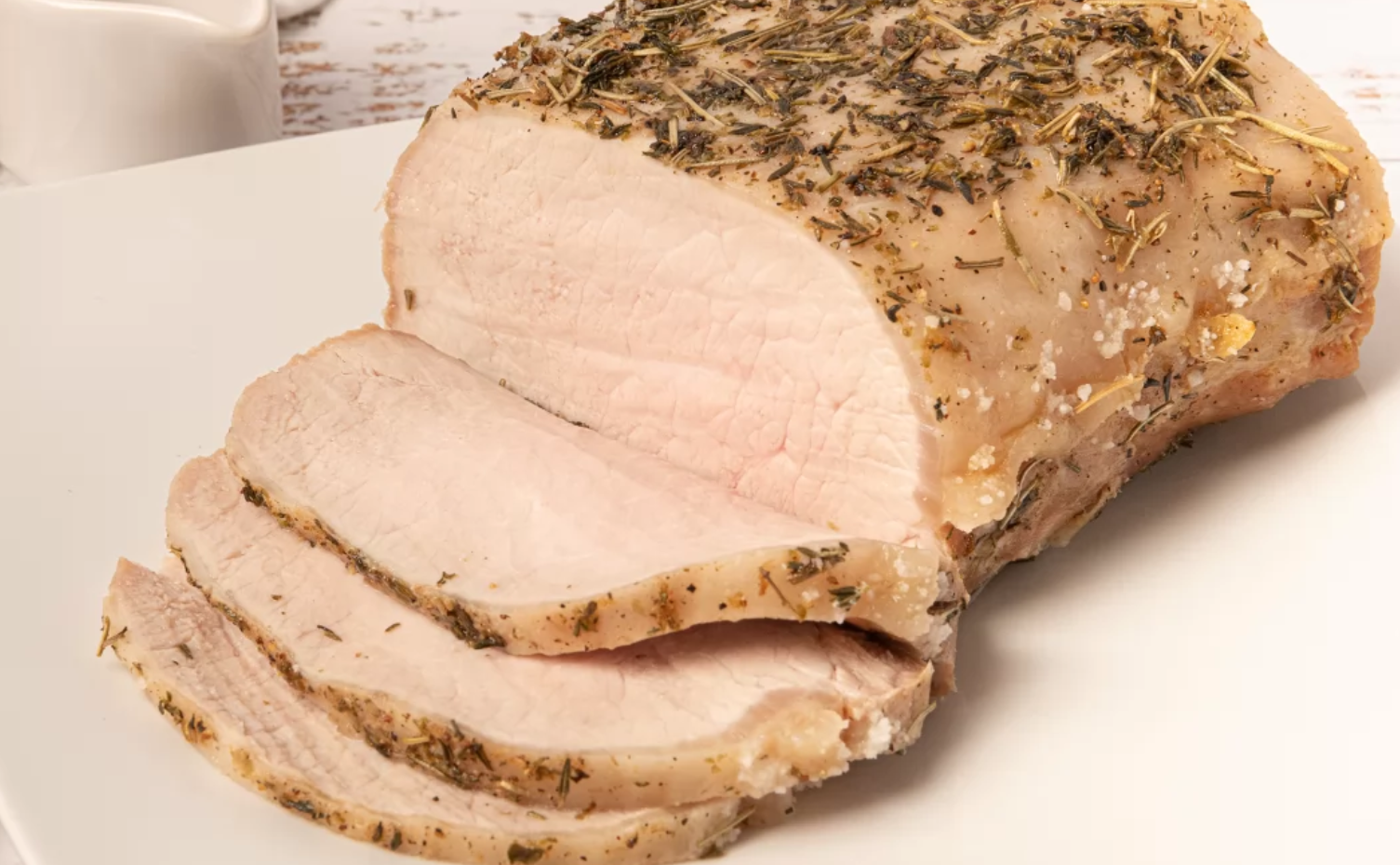Roasting meat to perfection can often seem like a daunting task. However, simplicity can truly be the key to a delectable dish. Today we will explore a wonderful recipe for Salt-Crusted Pork Loin (Lomo a la Sal), which is both straightforward and effective, promising succulent and flavourful results every time.

Here are the Ingredients you will need for 8 servings:
- 1 kg Pork Loin
- 2 kg Coarse Salt (suitable for roasting)
- Spices to taste
- Provençal Herbs to taste
Method:
Preparation Time: 5 minutes
Cooking Time: 45 minutes
Total Time: 50 minutes
Difficulty: Easy
1. Begin by ensuring the pork loin is clean. Rub it generously with your preferred mixture of spices and aromatic herbs. This can include anything from cumin and paprika to oregano, along with a blend of Provençal herbs. Once the meat is fully coated with the spices and herbs, set it aside while you prepare the salt crust.

2. In a roasting tin or baking dish, spread a layer of coarse salt about one centimetre thick to form a base. Place the seasoned pork loin on top of this bed of salt. Then, cover the pork loin entirely with more coarse salt, ensuring it is well enveloped to form a thick cocoon.

3. Preheat your oven to 180°C (350°F). Roast the pork loin for approximately 45 minutes. This duration will yield a juicy and tender result. If you prefer your meat more well-done, you may extend the roasting time to 50 or even 55 minutes for a kilogram of meat.
4. While the pork loin is roasting, you can begin preparing a sauce to accompany it. A simple and flavourful sauce can be made by gently sautéing some onions cut in julienne. Add a splash of white wine and a pinch of flour to the onions, reducing and lightly blending the mixture. Enrich the sauce further with the juices released by the pork loin when it is sliced.

5. Once the pork loin is done roasting, let it rest briefly before breaking away the salt crust. Slice the meat into fine, thin slices.
6. Serve the beautifully moist and tender salt-crusted pork loin with your chosen sauce and your preferred side dishes.

Accompaniments:
To elevate your Salt-Crusted Pork Loin dish, consider serving it with sautéed mushrooms or grilled vegetables as a side. These options complement the rich flavour of the meat wonderfully.
The Technique
Why Salt-Crusting Works:
Salt-crusting is a traditional cooking method where meat (or even fish) is encased in a thick crust of salt before roasting. The key to this method's success lies in the salt's ability to create a seal that prevents moisture from escaping. This means that the pork loin remains incredibly juicy and tender, while also absorbing the flavours of the herbs and spices used in the rub.
Versatility:
Despite its simplicity, the salt-crust method allows for a great deal of flexibility with seasoning. You can experiment with a variety of spice blends, herbs, and even incorporate some citrus zest to infuse the meat with diverse flavours.
Presentation:
Cracking open the salt crust at the table adds an element of theatre to your meal. It’s a great way to impress your guests and highlight the effort you've put into preparing a memorable dinner.
Making the Most of Your Pork Loin
Beyond its use as a centrepiece roast, the leftovers from your Salt-Crusted Pork Loin can be versatile. Thin slices of the pork loin can be used in sandwiches and salads, providing a light yet flavourful protein. Additionally, you can use the pork in cold cuts, making it an excellent addition to a charcuterie board.
Complementary Sauces
As the original article suggests, this dish does not inherently produce a sauce. Hence, preparing a complementary sauce is essential to round out the meal. Some classic options include:
1. Spanish Sauce:
A rich brown sauce made with onions, carrots, celery, flour, and beef stock simmered and strained. This traditional sauce melds perfectly with the savoury pork loin.
2. Mushroom Gravy:
A creamy mushroom sauce made by sautéing mushrooms in butter, adding flour, and deglazing with white wine and cream. The umami flavour of the mushrooms pairs beautifully with the pork.
3. Mustard Sauce:
A quick and tangy mustard sauce made with Dijon mustard, honey, and a splash of cream. This sauce adds a delightful sharpness to counterbalance the richness of the meat.
Suggested Side Dishes
1. Sautéed Mushrooms:
Quickly cooked in butter and garlic, these add a depth of flavour and a slight chewiness that complements the tender pork.
2. Roast Vegetables:
Carrots, parsnips, and Brussels sprouts roasted until caramelized provide a sweet and earthy counterpoint to the savoury pork.
3. Mashed Potatoes:
Creamy and rich mashed potatoes serve as a perfect bed to soak up any delicious sauces you have prepared.
Roasting a Salt-Crusted Pork Loin is an exquisite way to achieve perfectly cooked, juicy, and flavourful meat with minimal fuss. This method, while simple, guarantees impressive results that will delight your guests. Paired with a well-chosen sauce and complementary side dishes, it makes for an unforgettable meal.
Feel free to experiment with the recipe and make it your own. By adjusting the spice rub and trying out different side dishes, you can tailor this classic roast to suit any occasion. Serve it up at your next dinner party, and watch as your guests marvel at your culinary prowess.
Enjoy!